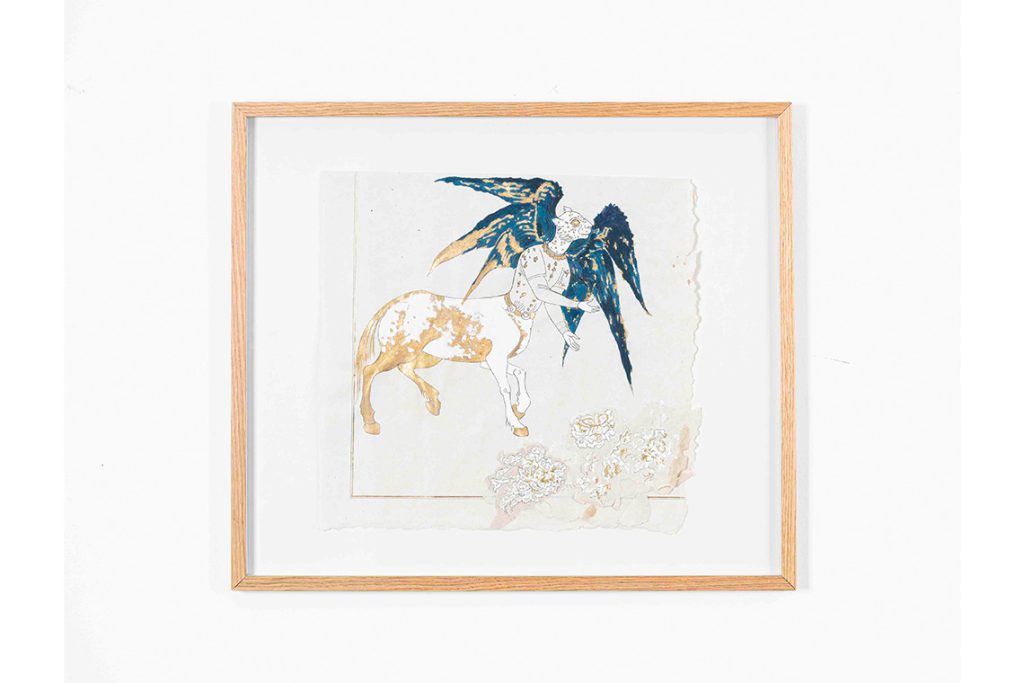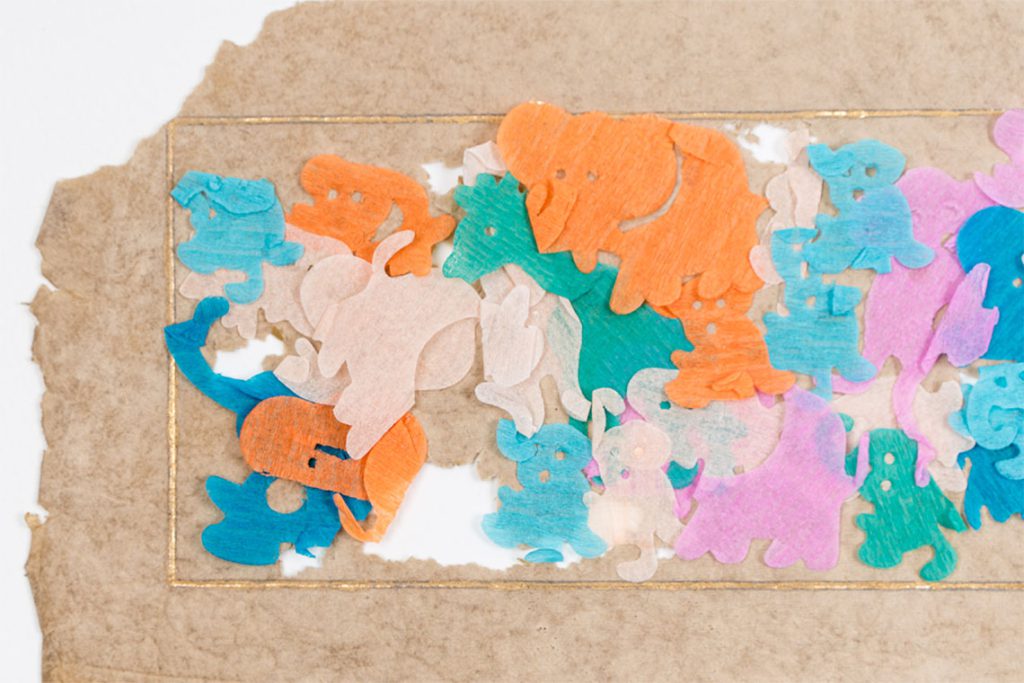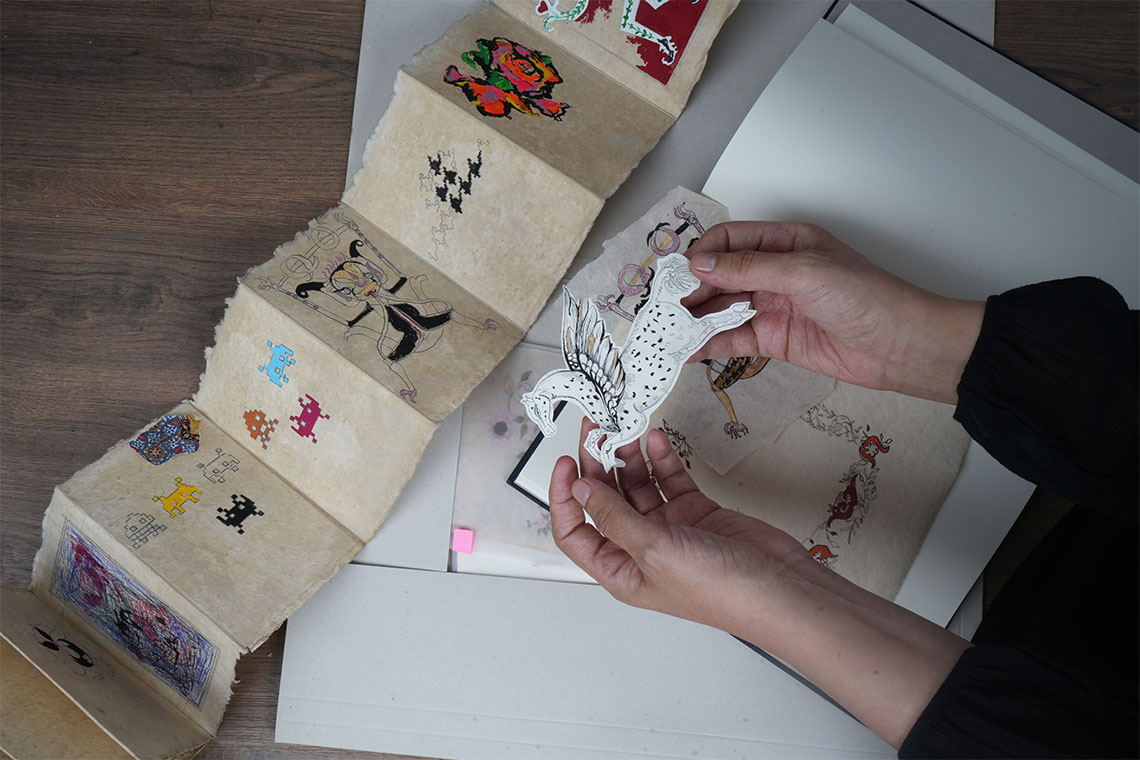The Saudi artist talks about her recent show at ATHR and how her work uses fantastical stories and legends as a gateway to exploring a more grounded reality.
Canvas: What first drew you to stories and folktales?
Asma Bahmim: Growing up, we lived in my grandmother’s house and she would always tell us stories. My siblings and I used to draw the characters and scenes of these stories, so for me this is where imagination began. They were mostly local folktales specific to our area of Hijaz, but there were also stories from other parts of Saudi Arabia such as Riyadh and Najd, as well as places like Palestine. My family has multiple roots, which I think has helped me open up to the ‘other’ and to the traditions of different societies and countries. Mythical creatures and people were always part of the tales I grew up with, and many stories across the Arab world feature the same creatures or characters. I actually had a book showing all the mythical creatures from different civilisations in history, from the Ancient Egyptians to the Mayans and beyond, which further triggered my love for myths and fantastical stories.

Image courtesy of the artist and ATHR
What is your favourite story?
There was one that parents would tell their children called ‘Don’t Leave Early’. We used to walk to school, so my mother would always tell me not to leave before my siblings, otherwise a creature called the Nemnem would come for me. This was an old, hunched women with black legs and a tail, and she would eat children. My imagination ran wild! Rather than be afraid, I would ask what she looked like, did she in fact eat children and where did their bones go? I look back on these stories fondly now, and I find it curious that most of the scary figures in them were female, often an old crone or a witch.
Your solo show Fantasia: A World Between Reality and Imagination at ATHR’s space in Jeddah (ended 15 April 2023) looked closely at mythical animals and their depictions in Islamic art. Can you tell us more about why you chose this theme?
In Arab and Persian history we have a collection of fables called Kalīla wa-Dimna, in which all the heroes are animals, and my show is inspired by them. Animals have always been important symbols in our cultures and local sayings. For example, if we are describing a bad person we might say “he’s like a wolf”, or someone with keen eyes as having the “eyes of a falcon”. In my exhibition, we had Dollar, the King of Elephants, debating who owns the moon pond with the rabbit, Firouz, who says he is rich and so could seek other ponds, but the moon pond is the only one the rest of the animals were able to drink from. The exhibition had over 30 ‘dialogues’ between two animal characters, and my series has eight main protagonists, plus some smaller friends.

Image courtesy of the artist and ATHR
Did you try and convey particular messages?
Indeed. For instance, in the fables there’s a pair of wolves who love each other, symbolising loyalty. In my paintings, however, it’s the opposite. The wolves are not loyal to each other, because in real life relationships don’t always end like the stories say. Another example is the hoopoe bird, which is usually a symbol of good news, but in my work I use the hoopoe to look at how a friend will race to you to spread gossip, or might only visit when bad news needs to be told. Next to my painting of the hoopoe is a copy of Elle magazine. These days, I feel that good news is kept close and guarded in case it provokes jealousy.
Your style of work is heavily influenced by traditional Islamic miniatures. Why do they interest you?
They have a depth of style and storytelling to them, but Persian miniatures in particular have very strict rules about how they can be created, from the way the brush is held and how brushstrokes may only go in one direction, to the use of gold inks and certain colours. However, Arab miniatures are freer with the brush movements and so are easier and quicker to draw, which I like. I would be cooking or looking after the kids and still be able to do a quick drawing of an animal. There is also a wider range of colours that can be used, as the message is more important than the art. The traditional drawings were supposed to be understood by everyone and so were quite simple, which is what I wanted for my artwork too: for anyone to look at them and be able to take away a message or insight.
This interview first appeared in Canvas 109: Smoke and Mirrors



